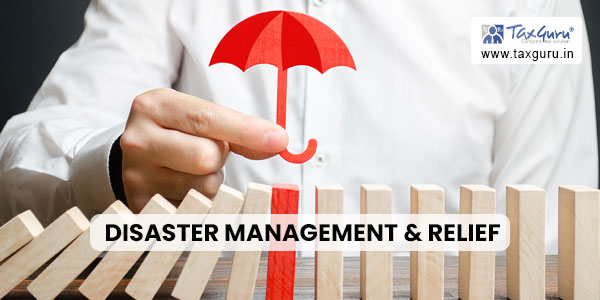The impending introduction of SAS 1200, a critical framework established by the ICAI, holds immense significance for disaster management, relief, and reconstruction efforts. This standard, once notified, will set in motion a comprehensive system to address the challenges posed by disasters and their aftermath. The focus lies on disaster relief, recovery, and reconstruction activities, with an aim to provide essential necessities like food, clean water, medical care, and support for displaced individuals.
Process of Social Audit
The SAS offers insightful advice on who the SA should contact in order to gather data for its effect assessment assignment, including but not limited to:
- Directly Affected People e.g., children, women, men, people with special needs
- Local bodies including Panchayati Raj Institutions
- Community Leaders
- Government Officials/Concerned departments
- Non-Government Organizations (NGOs) personnel working in the disaster affected areas
- Volunteers
- Key program officials of the reporting entity
When conducting surveys and collecting sample data, the following factors should be considered to assess relevance and reliability:
- designed and conducted by an in-house team or external specialized agency
- coverage: number of villages/districts/states total distance (kms) covered, clusters, number of families,
- response speed and quality
After data collection, the SA should thoroughly review the data, which can include conducting physical inspections and one-on-one interviews to better understand the situation.
Evaluation question
The social audit process under this SAS involves the SA asking key questions of themselves and the people involved. These questions form the foundation of the Social Impact Assessment Report. These questions could include:
A. Goals Attainment:
- What types of activities were carried out for disaster management programme?
- Were the activities planned for disaster victims able to cater their needs?
B. Process
- What was the response strategy followed?
- Were procedures prepared adequately in advance and followed during the post-disaster period?
- Was any process followed for conducting damage and loss assessment in the affected area?

C. Training:
- Whether trainings were conducted for outreach workers and volunteers in on how to respond to such emergency situations during disaster?
- Whether trainings were conducted for health workers on sanitation, first aid, disposal of wastes, food sanitation, medical care etc., if applicable?
D. Quality:
- Was the quality of the relief and rehabilitation, reconstruction activities (food, medical facilities, shelter etc.) acceptable to beneficiaries and in line with state/ guidelines, if any?
- Whether any specific criteria were followed for relief material distribution (age, disability etc.)?
E. Challenges:
- What were the constraints or challenges faced during the relief and rehabilitation activities?
Likewise, there are many other questions that need to be identified by the SA.
Key Metrics: Framing and Assessment
The SA will follow the results of this evaluation in coming to their report’s conclusion. They will be able to evaluate the performance of the social enterprise based on its social impact after collecting all the data and analyzing the important parameters. These grading inquiries could cover the following topics:
- What would have happened in the absence of the intervention?
- How much has the project contributed to the changes that are evidenced?
- Is there any unintended negative impact that happened due to the intervention?
Such information, about Disaster management, relief and rehabilitation, may include the following points in respect of the beneficiaries covered under the survey:
A) Composition
- Demography, area, disaster prone communities, social background of the affected communitye.g., age wise distribution, distribution based on disability, gender, people with comorbidities, social category wise distribution
- Volunteers from the fields
- Changes in socio-economic factors – acceptance in the village/society, economic condition, health condition including mental health, confidence level, livelihood options, income generation activities
B) Pre-disaster Measures
- Preparedness to deal with any disaster
- Plan for prompt responses to any disaster, including assessing the severity of situation
- Planning for protective measures such as evacuation of people to safe place, education of public regarding disasters especially in areas subject to natural disasters
C) Post-Disaster Measures
- Rapid Assessment of Disaster location and situation
- Immediate mobilization of personnel and equipment
- Search and rescue operations carried out
- Beneficiary listing and validation
- Continued rescue and care of victims with referrals to hospital as needed
- Restoration of communications, water services, waste disposals etc.
D) Rehabilitation
- Provisions of livelihood for affected people (temporary/permanent, gender based)
- Distribution of equipment to support their livelihood
- Restoration of electricity supply
- Family Services including information and welfare inquiries
- Medical facilities through mobile clinics and volunteers
E) Reconstruction
- Shops/ houses provided to the victims had adequate space
- Relocations were made in view of the educational needs especially girls
- Reconstruction of schools and Anganwadi centres
F) Skill development and opportunities creation
- Skill development programs conducted
- Linking the skilled workforce to market
G) Other Factors
- Community based early warning system
- Provision of supplies to community centres
- Development of knowledge products
Assessment of evaluation criteria
The Social Auditor needs to recognize evaluation criteria of both Qualitative and Quantitative for assessing the impact.
Some key aspects that can be considered as evaluation criteria are listed below:
Quantitative
(A) Disaster Management and Relief
- Preparedness trainings/Evacuation to volunteers/Outreach workers & staff members, in case of advance warnings for the disaster (for example, in case of a Tsunami or a Cyclone):
I. Number of people trained
II. Time duration of training
(B) Relief Strategy:
- Response time after the first reports of disaster
- Number of other organizations providing relief materials in the same area
(C) Beneficiaries/Victims
- Number of causalities recorded
- Number of missing people recorded
- Number of beneficiaries reached
(D) In case temporary/permanent shelter is necessary, how many affected people have been provided with the shelter?
- Total number of Affected people
- Capacity of shelter homes
- Number of people who actually took shelter
- Time in which they received the shelter
- Number of Sanitation units
(E) Relief measures provided to the beneficiaries
- If food packets provided
- If water has been supplied, then how many affected households/people received clean water?
- In case medical care is provided
- If clothing support is provided, how many affected people have received the support?
- If schools have been setup, then, what is the number of volunteers appointed in schools
- Other Support e.g.,
- Number of blankets provided
- Number of Tarpaulin sheets
(F) Rehabilitation and Reconstruction
- The time duration for rehabilitation initiatives
- Number of people who lost their livelihood or had their livelihood affected
- Timeline decided to repair or reconstruct infrastructure
- Time taken for rehabilitation of the affected households
Qualitative
(A) Implementing Partner Selection criteria
- Coverage of the affected area
- Presence in the area
- Language
- Experience in the similar kind of activities
(B) Preparedness trainings/Evacuation to volunteers/Outreach workers & staff members, case of advance warnings for the disaster (for example, in case of a Tsunami or a Cyclone)
- What all preparations were made after advance warning?
- Training of staff and out-reach workers
- Topics of training
(C) Relief Strategy
- Rapid assessment to evaluate loss & damage and requirements
- Weather condition considered before initiating relief initiative
- Photographs & videos were taken for validation
(D) In case temporary/permanent shelter is necessary, what type of shelters have been provided?
(E) Relief measures provided to the beneficiaries
I. If food packets provided
II. If water supply is provided
III. In case medical care is provided
IV. If clothing support is provided
V. Educational Support
(F) Rehabilitation and Reconstruction
- Infrastructure assessment to evaluate the loss & damage
- Were there any measures taken for income generation activities?
- What type of activities were initiated?
- Was there any equipment distributed for income generation?
- What was the scale of reconstruction (individual houses, common good, etc.)?
- Was an opinion regarding the geo-morphology of the area taken by an expert before commencing the reconstruction (during the planning phase)?
- What measures have been taken to avoid widespread destruction of the reconstructed structures, in case there is another calamity or disaster?
- Are the affected people satisfied with the rehabilitation and / or reconstruction?
Challenges/ Areas for improvement
Based on their suggestions and input, which may have an impact on the impact assessment, the stakeholders’ difficulties and areas for improvement should be identified by the social auditor.
- Regulations set forth by Government for Disaster Management and Relief activities are not complied
- Insufficient data / information available to plan appropriately
- Slow evacuation process due to logistical challenges
- Relief material was not provided on time
- Quality of response was not up to the mark
- Sufficiency of the Response
- Identification of affected population
- Lack of coordination and collaboration with other implementing organizations like government departments, NGOs etc.
Limitations
- Cases of no-response in case the questionnaire is not administered in person
- Some of the questions being skipped by the respondents and remaining unanswered
- Non-traceability of beneficiaries
- Lack of pre-disaster information about people, communities, livelihood etc.
- Limited documentation maintained for relief provided after disaster
Any significant challenges or limitations observed must be highlighted by the SA in their report.
Conclusion
In an era where disasters have become increasingly frequent and impactful, the introduction of SAS 1200 signifies a proactive approach to disaster management and relief. By implementing a comprehensive framework, this standard aims to mitigate the adverse effects of disasters and facilitate efficient relief and reconstruction efforts. Social Auditors play a pivotal role in assessing the impact and effectiveness of these initiatives, ensuring that disaster-affected individuals receive timely and adequate support. As challenges persist and circumstances evolve, the SAS 1200 framework offers a structured approach to disaster management, fostering resilience and aiding communities in their path to recovery.





